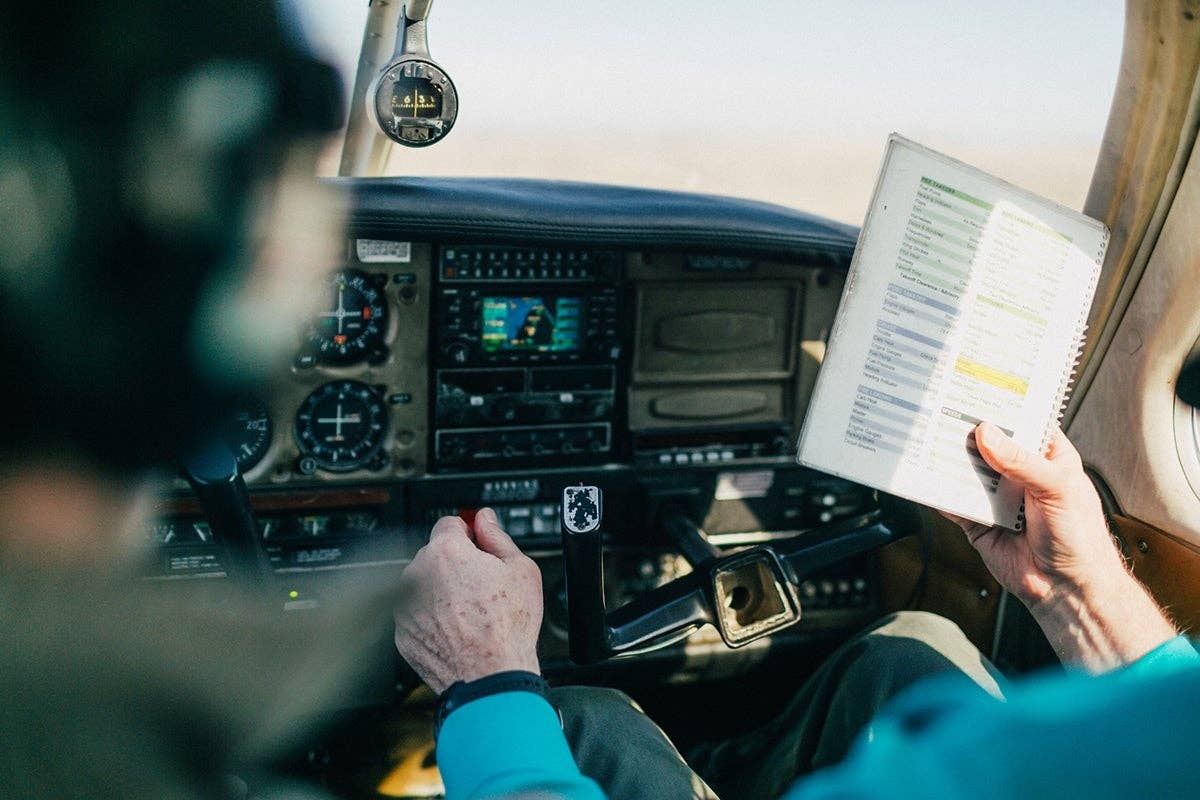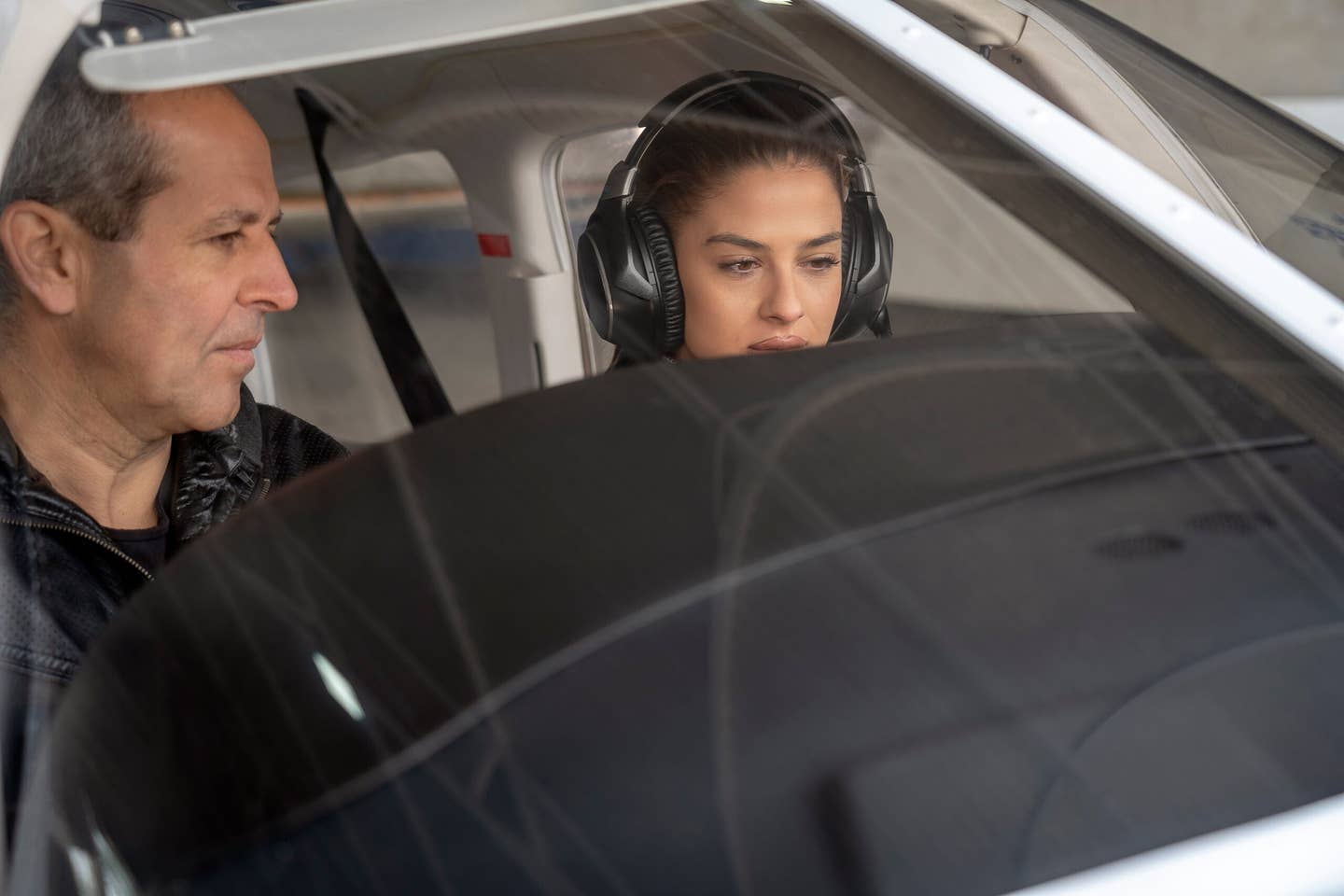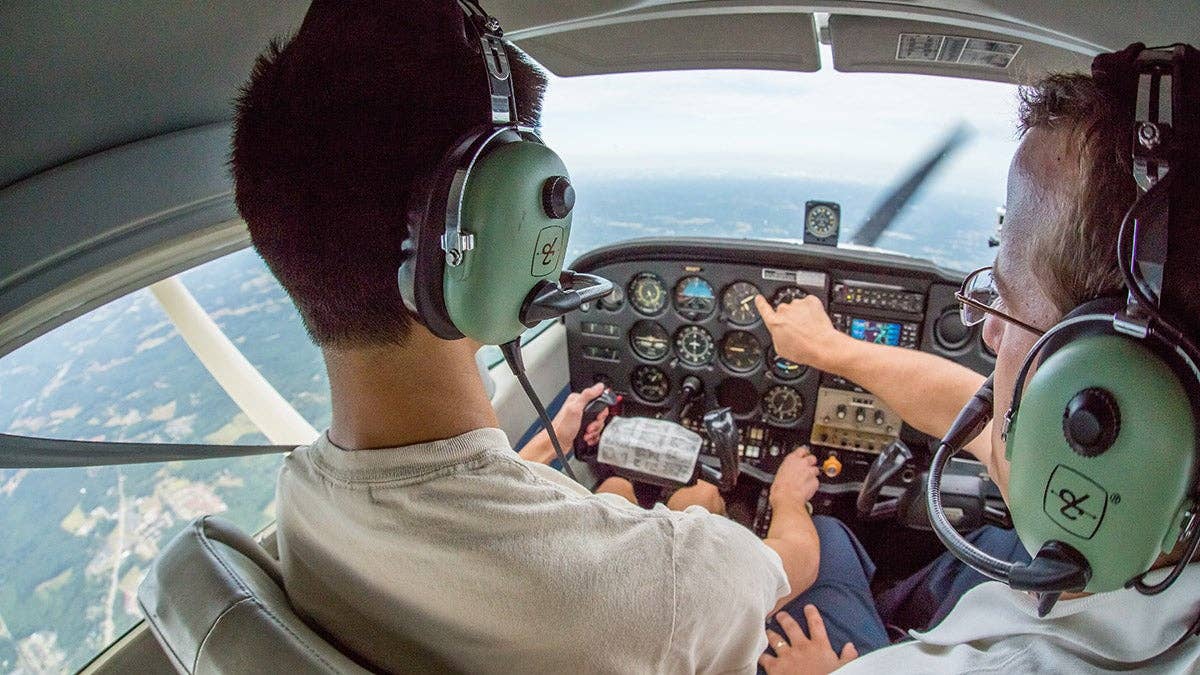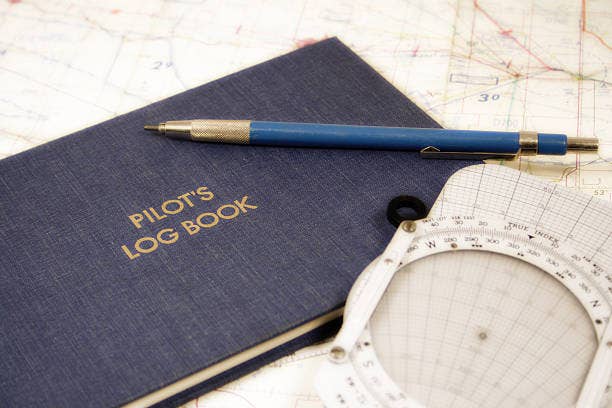
The switch to flying IFR is easier than you
might think and well worth the effort. Chris Gall
For pilots making their way through the world of ratings independently, as opposed to through a highly structured training program, the instrument ticket generates more anxiety per flight hour than all the other ratings combined. It should come as no surprise that it does. To go from the world of VFR flight (which is how we all started) to flying solely by reference to the gauges is a huge leap, one that takes training, a good bit of nerve and the wherewithal to learn a new language and navigate a new road map.
It’s been a few years, but I remember vividly making the transition, and it was filled with potholes every which way I turned. What did I find challenging? Not much. I lost sleep over only flight planning, radio communications, autopilot use, weather judgment, instrument interpretation and approach planning. That’s all.
Looking back, I realize I was set up to fail by the training system and by my own weaknesses and inexperience as a VFR pilot, weaknesses I’d seldom had exposed before.
The good news is that the transition doesn’t have to be as hard as it was for me and countless other pilots, many of whom gave up without ever having learned to put their new skills to use.
Instrument flying, like any kind of flying, has inherent risks. That said, there are a few simple secrets that I learned the hard way. Moreover, new tools and new technologies started coming together about 10 years ago that make instrument flying safer, less labor intensive and more easily understandable from early on in the game.
Change Your Thinking
If you earned your rating training with any conventionally minded provider, and that's most of them, you're going to have to change the way you approach your flying. Part of that is simply because courses are designed to help students pass the check ride, and check rides are constructed to allow applicants to demonstrate basic instrument proficiency, which is very different from IFR transportation proficiency. By the end of my two-week instrument course at a world-class training organization and taught by a very sharp, smart and experienced IFR instructor, I was absolutely unprepared to launch into the real world of IFR. I was great at flying the ILS to Runway 5 at the airport at which I trained, but when it came to figuring out how to plan and conduct a flight on my own to an unfamiliar destination … let's just say that I felt as though I were starting nearly from scratch on the process.
I do want to start by saying that, in terms of its major goal, my training provider did a great job. I passed my check ride on the first flight.
However, there were a number of areas in which they let me down, though I wasn’t aware of some of them for some time. And to be fair, I earned my instrument rating 15 years ago, so there were technological areas in which the school was not yet up to speed. Instructors were also laboring under some backward ways of thinking about instrument flying — including outmoded attitudes about technology, such as autopilots, and their rigid, standardized training model — that can be laid squarely on their shoulders. In their defense, they were hardly alone in this regard.
Starting Out
Upon getting my ticket, I was smart enough to know how bad an instrument pilot I was, and I set about to become a better one. As I mentioned in a piece last year about flight planning ["IFR Flight Prep: A Whole New Game," April 2010], I had some help from friends and colleagues who were smart and experienced instrument flyers.
Unfortunately, that didn’t stop me from being very anxious about my IFR trips. In hindsight, it was a natural reaction to stepping into a world that was still largely unknown. But it would have been a lot easier had I been given better tools and more enlightened guidance beforehand. Luckily, today those tools, from handheld weather receivers to affordable panel-mount MFDs, are widely available.
Like many new IFR pilots (and pilots new to flying), I was overwhelmed by the briefing process. The old-fashioned way of presenting weather information left me without a clear understanding of where the real weather was and how I might avoid it. With fronts and airmets and sigmets defined by obscure strings of VOR identifiers, most of them a mystery to me, I was left with a vague sense that there was nasty weather … out there somewhere. So I indulged in long, laborious phone briefings, many of them conducted by specialists who were clearly not pilots. On one briefing, I was never told of a tornado watch that began just a few miles beyond my destination airport. My landing there was one of the wildest rides I’ve ever experienced, and I’ve flown with Patty Wagstaff.
So I learned to find the graphics. I watched the Weather Channel, used DUAT’s graphic weather page and learned to put the text into plain language, when in doubt, to ensure I wasn’t missing anything. I always felt as though I were cheating a bit by doing this, like I was letting down some imaginary grizzled IFR veteran who reads briefing strips off a teletype while drinking black coffee at the flight service station in the predawn hours.
The truth is, I was doing the smart thing, figuring out a way to come up with the best picture in my mind of what the weather hazards were so I could plan my flight accordingly.
Technology has come to the rescue in this regard, in the form of some amazing new weather products, including icing forecasts, much more accurate winds aloft and turbulence models, and better satellite imagery, tops reports, storm cell detection and tracking, and severe weather warnings, just to name a few. There are several excellent free and for-pay websites and applications that make this kind of information easier than ever to access and understand.
One of the hardest lessons to learn was to let a good forecast be a good forecast. Today when I plan a flight, even a long one, where there’s a huge high centered over the route with no sigmets or airmets intruding on the day, I can pretty much leave it at that. Get the forecast and the winds aloft, pick an altitude, plan the route and go flying. What was once a tortuous ordeal of many hours has today turned into a breeze. When there’s hazardous weather forecast, do I spend more time getting the weather? You bet I do. But there’s very little anxiety involved. And the go/no-go decision is easy. Unless there’s a 500-mile-long wall of fire and brimstone along my route of flight — freezing rain and a few other conditions fit this category — I’m going flying. I’ve had to cancel only a few flights over the last 10 years for weather, and I’ve had to divert one other time, which is testament to the utility of single-engine airplanes for IFR flying.
It’s all about paying real attention to the real risks and not paying undue attention to the underlying risks.
Use the Tools
There are many tools available to us as instrument pilots that weren't around 15 years ago or that weren't widely taught or endorsed.
A good place to look for help is the iPad. One of the most tedious, time-consuming and aggravating jobs in all of aviation is updating chart binders (or even just finding updated charts, period). Invariably, when I was starting out I’d wait until the last day before a trip before realizing I had a lot of chart updates to my binders in addition to, it goes without saying, packing, flight planning, finishing up a few work things and, oh yeah, getting a little shut-eye. With the iPad, the chart updating process is a dream. Log on, hit a few “update” buttons, leave the iPad sitting next to the router and, before you know it, you’re good to go. It’s a huge time and stress reliever. The same is true, of course, for charts on a panel-mounted MFD or electronic flight bag. The name of the game is making it easy on yourself.
Flight planning is another area in which I used to agonize over details that, in the grand scheme, didn’t matter a bit. Going out of an unfamiliar airport without high terrain around it, for instance, it doesn’t typically matter what you file to get out of there. I often simply file “direct.” If the controllers don’t like that route, they’ll correct me. They might give me a routing that will take me 45 seconds longer to fly, but they won’t give me something hazardous.
The key here is that you’ve got to be able to put away the charts and flight-plan that new routing. If you’re not good with the flight planning function on the Garmin or Bendix/King box, you’d better learn. When I get an unfamiliar routing, it’s generally a piece of cake. Put in the departure, the transition, the first few fixes and then the destination. If your first unknown fix is 2½ hours down the airways, believe me, you’ll have plenty of time to get those waypoints entered, along with the arrival, if you get that far: Most controllers in most of the country will eventually give you a long direct-to clearance. The point is that there’s no need to agonize over the details of the flight plan in most instances. Most of them are pretty much variations on a line segment anyway.
That said, when there’s high terrain involved, fly the airways, especially when you’re in a single-engine airplane. They’re laid out to take you over lower terrain (though “lower” can be a relative term) and they often follow areas where there tend to be more airports (though out West airports can still be few and far between).
Most instrument instructors spend an inordinate amount of time on basic aircraft control. This is a good thing — you do need to be able to keep the airplane under control, because loss of control in the clouds is very often a fatal mistake. And I can’t stress enough how important it is to learn to rely without fail on the instruments and not on what your inner ear is telling you. That too is a mistake that leads to fatal consequences, especially since it happens often during maneuvering flight, most often during departure and approach, when the ground is closest and recovery the least likely.
During my two-week course, however, not one instructor uttered one word about autopilot use, and that deprived me of a crucial piece of the IFR safety puzzle. If you’re flying IFR and you’re not using it extensively, you’re automatically ratcheting up the risk for yourself. And if you’ve bought the “real men don’t use autopilots” macho nonsense, then unlearn it. Real men and women care about safety, and autopilots make you safer. You should use them for departure, en route and on arrival. You should learn to use them and then proceed to use them while flying approaches. When the going gets tough and there seems to be too much for one pilot to do, the autopilot is your best friend.
Technology Friends
There have been a few other innovations in the past 10 or 15 years that have made the instrument pilot's job easier and safer.
I’ll start with the one we use all the time, the moving map. This one was especially important for me, because it allowed me to overcome a built-in weakness of my flying, a relatively poor ability to translate the raw data into a situational picture. During training this was very frightening. I’d be looking at a map and compass rose and a CDI needle, and I’d be intercepting the localizer to fly outbound for the procedure turn, and I’d be trying to picture it all in my head. It was as clear as mud. What I dreamed about was a display that showed my airplane relative to the fixes and runway that made up the approach. A moving map display. Its widespread adoption in the cockpit was a godsend to me, and to thousands of other pilots who were too embarrassed to admit that situational awareness was a challenge for them. Today’s moving maps are great. There’s no excuse for not having one, even if you do fly an airplane with steam gauges. Portable moving maps answer all the same situational awareness questions that a panel-mounted unit does. It might not be an IFR-legal tool, but as a tool to aid situational awareness, it’s worth its weight in gold.
Another tool that’s cut the risk by increasing knowledge is in-cockpit weather. The biggest risks to IFR flight, in addition to loss of control and mechanical failure, are weather-related accidents. Those take the form of accidents related to thunderstorms, icing, very low visibility (which should never cause an accident) and wind/turbulence problems. The great news is that we have better, more quickly updated and more readily available information on every one of these weather hazards, even when we’re en route. This is a huge change from when I started flying IFR. It doesn’t mean that there’s not hazardous weather out there, or that the weather conditions don’t change without warning. But it does mean that we have better awareness than ever of what hazards are out there, where they are and how to avoid them. We can also keep regularly updated on changing conditions.
Even if you don’t have weather in a panel-mounted MFD, again, portables are great for this. You just have to foot the bill for the subscription, learn how to access the information and then stay right on top of it. As with everything else in instrument flying, information is our friend. The more we have and the better we can interpret it, the safer our flying can be.
Finally, know how to plan a flight and file a flight plan anywhere at any time. Again, there are tools galore for getting this done, from iPads to computer-based programs to good old DUAT. The less time and angst you invest in flight planning when you’re on the road, the more rested and happy you’ll be. You’ll also be saving time, which will give you more time en route to spend flying, one hopes in the daylight.
Getting There
The transition to flying IFR can be one of the most challenging changes a pilot ever makes. At the same time, there are rewards both practical and personal from making the leap to instrument flying, and they make the work worthwhile. Flying by the gauges lets you make more trips more predictably and with less risk. After doing this for many years now, and having made the transition myself, there's zero doubt in my mind that this is true.
Even more, with all of the tools and technologies available to us, we have the potential to fly more safely and with far better precision and situational awareness than was possible even a decade ago. Of course, that doesn’t mean there’s no risk involved in flying IFR. It does mean, however, that when we fly smart and fly with the tools at our disposal, including, most importantly, our good judgment, we can fly with greatly reduced risk as we build hours and confidence.
For more IFR tips from Robert, check out his "Seven IFR Rules to Fly By."

Sign-up for newsletters & special offers!
Get the latest FLYING stories & special offers delivered directly to your inbox






